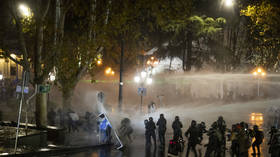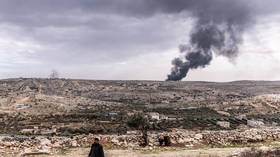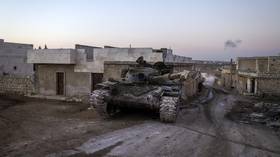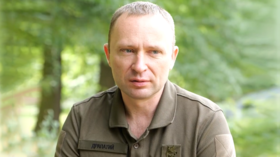Could ‘nude Mona Lisa’ solve mystery of iconic smile? (PHOTOS)

The mystery surrounding Mona Lisa’s enigmatic smile has puzzled art lovers for centuries but a new observation may have an answer. It seems Mona’s cheeky smile may have something to do with Da Vinci drawing her nude.
Scientists at the Louvre Museum in Paris have been studying ‘Monna Vanna,’ a 500-year-old charcoal portrait that bears a striking resemblance to Mona Lisa herself. It was believed that it was sketched by one of Da Vinci’s students.
However, upon analyzing the topless Monna Vanna, experts now believe that it was, at least in part, sketched by the legendary artist and inventor himself.
The similarities to the Florentine master’s painting are obvious with the positioning of the hands and body almost identical in both portraits.
Analyse de la Joconde nue au @c2rmf avec Bruno Mottin, conservateur du @c2rmf et @mathieudeldicqu conservateur du @chantillydomainpic.twitter.com/alMMSu09nP
— Domaine de Chantilly (@chantillydomain) September 28, 2017
"The drawing has a quality in the way the face and hands are rendered that is truly remarkable," curator Mathieu Deldicque told AFP.
Puncture marks around the charcoals edges also indicate that it may have been placed on a canvas to be traced by the artist.
Why so serious? Mona Lisa is smiling says science https://t.co/02qUkk0Oeb
— RT (@RT_com) March 14, 2017
“It is not a pale copy," Deldicque said. "We are looking at something which was worked on in parallel with the Mona Lisa at the end of Leonardo’s life. It is almost certainly a preparatory work for an oil painting."
Experts are not completely certain it was the work of Da Vinci, however, as some of the strokes appear to have been made by a right-handed artist. Da Vinci was famously left-handed.
“The hatching on the top of the drawing near the head was done by a right-handed person. Leonardo drew with his left hand,” Louvre conservation expert Bruno Mottin said.
#Vinci#Joconde la recherche progresse pic.twitter.com/peBrzRFyFJ
— Eric Biétry-Rivierre (@ebietryrivierre) September 27, 2017
Adding that "we must remain prudent" when attributing the sketch to the Renaissance master who died nearly 500 years ago, in 1519.
Since 1862, the Monna Vanna has been part of a huge collection of Renaissance art at the Conde Museum at the palace of Chantilly, north of Paris. Over the last few weeks, more than 10 experts have been studying her to determine whether it was made before or after the Mona Lisa was painted around 1503.
The scientists hope to have an answer within two years, just in time for the 500th anniversary of da Vinci’s death.












